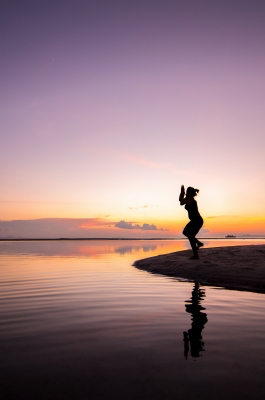
THE POWERFUL ENERGY AND BENEFITS OF TAI CHI
Welcome everyone to another Health and #WELLNESS WEDNESDAY! And, of course, we’re going to continue today with another discussion on Complementary and Alternative Medicine — or CAM.
Now, we all understand the importance of physical exercise in our overall program of staying fit and healthy. But, I always remind people that in order for exercise to be effective, it doesn’t have to be strenuous. After all, not everyone is capable of running five miles a day or spending several hours each week in the gym. Indeed, some of us have physical limitations that prevent us from moving freely or, in some cases, from standing or walking.
So, today we’re going to talk about Tai Chi — another ancient Chinese discipline that proves the adage, “doing less can accomplish more.” Or as the Chinese say, “four ounces can deflect a thousand pounds.”
To begin, Tai Chi is a centuries-old Chinese martial art. It originated from a discipline called “qigong” — which has its roots in traditional Chinese medicine. And, while the practice has been used for self defense throughout the centuries, today it is associated with the promotion of inner peace and calm. It uses internal energy and very subtle physical movements to create “natural balance” between the mind and body.
Now, if you remember from our discussion on acupuncture, Chinese philosophy believes that our intrinsic energy travels along pathways in the body known as meridians. Indeed, traditional Chinese medicine considers human beings to be miniature versions of the universe — composed of the five elements of metal, fire, wood, water and earth. And, a state of good health is achieved when the meridians are flowing freely and the five elements are in balance.
Of course, there are many different types of Tai Chi. In fact, there are approximately 3,000 varieties! Yet, three of the most popular styles are Yang, Tai Chi Chih and Wu. The first, Yang, is perhaps the most advanced style that involves 24 basic movements. The second, Tai Chi Chih, involves 24 to 36 movements, but is a bit more gentle and easier to perform than Yang. And the third, Wu, involves 20 movements all of which help improve balance — are perhaps the easiest to perform — and, therefore, probably perfect for beginners.
No matter which style or type of Tai Chi you choose to try, however, there is something they all have in common. And, that is the beautiful, slow, rhythmic, meditative movements that define the practice. The people you see in the parks moving so gracefully with gentle, flowing body movements? They’re practicing Tai Chi!
And, the really wonderful thing about this practice is that just about anyone can do it. The movements are low-impact putting minimal stress on the joints and muscles. It requires very little space. It can be performed at your own pace in a non-competitive environment. The risk of injury is very low. And, you have the choice of either practicing it in a group setting — or privately by yourself. Furthermore, even if you are wheelchair bound, there are Tai Chi movements that can still help bring comfort and physical flexibility into your life.
So, let’s look at SEVEN GREAT REASONS to add Tai Chi to your life:
1) Improved muscular strength and endurance;
2) Improved flexibility;
3) Decreased discomfort from musculoskeletal disorders such as fibromyalgia and arthritis;
4) Improved sense of peace and calm;
5) Decreased mental and physical stress;
6) Improved aerobic capacity, and;
7) Improved balance.
Now, as far as getting started with Tai Chi — it’s always a good idea to first consult with your personal physician. Make sure she or he is onboard with your decision — especially if you have any chronic medical conditions or injuries that affect your mobility and everyday life.
After that, it’s easy! Because Tai Chi has become so popular in the Western world, including the United States, classes are almost always available. Now when you start, taking a class with a certified instructor is probably the best way to learn. This is because the movements of Tai Chi are very subtle and gentle. And, having an instructor close by will insure that every move you make will be correct. Then once you have it down, if you choose, you can enjoy the practice completely on your own!
So, why not check at your local community center or medical facility to see if classes are offered? Or, if you do happen to live in an area in which no classes are available, learn from an instructional video tape — it’s the next best thing.
Tai Chi is easy. It’s gentle. It’s enjoyable. And, it’s powerful! So, no matter what style you choose to practice — or how you learn — you too will benefit from its traditional flowing movements and its meditative wisdom. Good for the mind, body and soul!
Thanks for joining me everyone! Stay in good health and until next time,
TAKE THE COURSE AND TAKE CHARGE!
Image courtesy of arztsamui at Freedigitalphotos.net



Leave a Comment